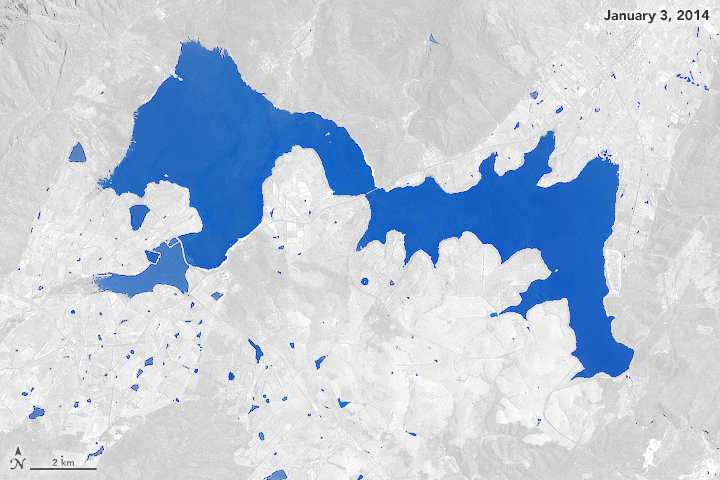South Africa Is Experiencing A Catastrophic Drought
- By Dain Helmers
South Africa has been experiencing a severe drought over the last three years, with dam levels dropping to record lows. Three of South Africa's nine provinces have been terribly affected by this drought. The city of Cape Town, population 3.7 million, is estimated to be less than four months away from "Day Zero" or the day that the city will run dry. Believe it or not, water conservation efforts coupled with a small amount of rain have improved the dire situation from earlier this month, at which time Zero Day was placed at the 12th of April.
As of now, residents of Cape Town are limited to 50 liters (about 13 gallons) per day, for drinking, cooking, cleaning, bathing and all other purposes. This allows residents to take a very short shower and flush the toilet about once a day, to leave enough water for laundry or dishes once a week. (For comparison, the average American household uses 379 liters (100 gallons) per day. This is the latest reduction of several during this drought; Cape Town has cut its water consumption in half in the last two years, now consuming 550 million liters per day compared to over a billion per day at the beginning of 2016. Still, this is not enough to sustain the needs of a city of Cape Town's size. Very soon, the water allocation per day will be reduced even further. The drought has been declared a National Disaster by the South African government, who are working towards a solution to keep Cape Town and other parts of South Africa from running out of water entirely.
South Africa has been experiencing a severe drought over the last three years, with dam levels dropping to record lows. Three of South Africa's nine provinces have been terribly affected by this drought. The city of Cape Town, population 3.7 million, is estimated to be less than four months away from "Day Zero" or the day that the city will run dry. Believe it or not, water conservation efforts coupled with a small amount of rain have improved the dire situation from earlier this month, at which time Zero Day was placed at the 12th of April.
As of now, residents of Cape Town are limited to 50 liters (about 13 gallons) per day, for drinking, cooking, cleaning, bathing and all other purposes. This allows residents to take a very short shower and flush the toilet about once a day, to leave enough water for laundry or dishes once a week. (For comparison, the average American household uses 379 liters (100 gallons) per day. This is the latest reduction of several during this drought; Cape Town has cut its water consumption in half in the last two years, now consuming 550 million liters per day compared to over a billion per day at the beginning of 2016. Still, this is not enough to sustain the needs of a city of Cape Town's size. Very soon, the water allocation per day will be reduced even further. The drought has been declared a National Disaster by the South African government, who are working towards a solution to keep Cape Town and other parts of South Africa from running out of water entirely.
Theewaterskloof Reservoir, 2014-2018.
Source: NASA Earth Observatory
Do you want to help? Please visit and donate to Drought Disaster Fund.
Source: BBC, "Cape Town Drought Declared a National Disaster" http://www.bbc.com/news/world-africa-43047833 13 February 18.
Photo credit: Jon Kerrin Photography



Comments
Post a Comment
Let your knowledge, ideas, and innovation be heard. Tell us what you think and know about this topic.